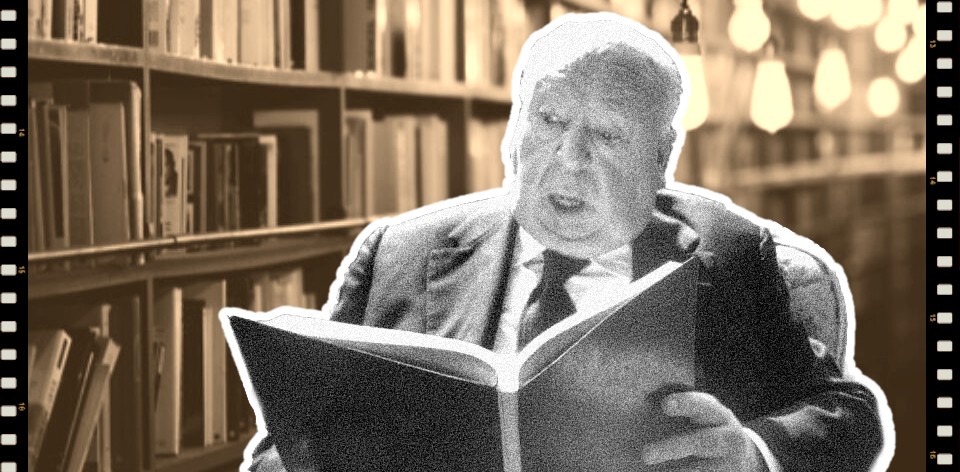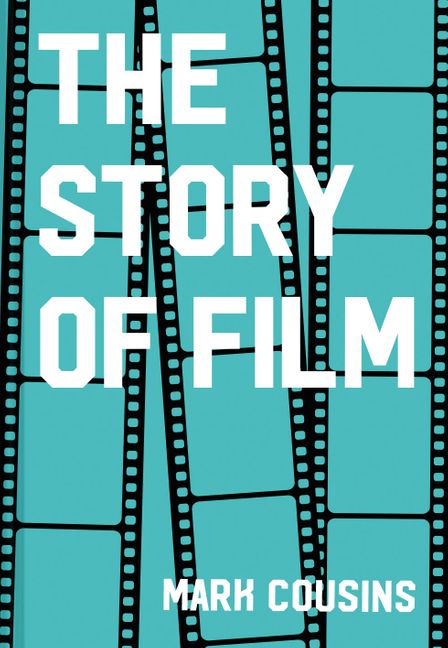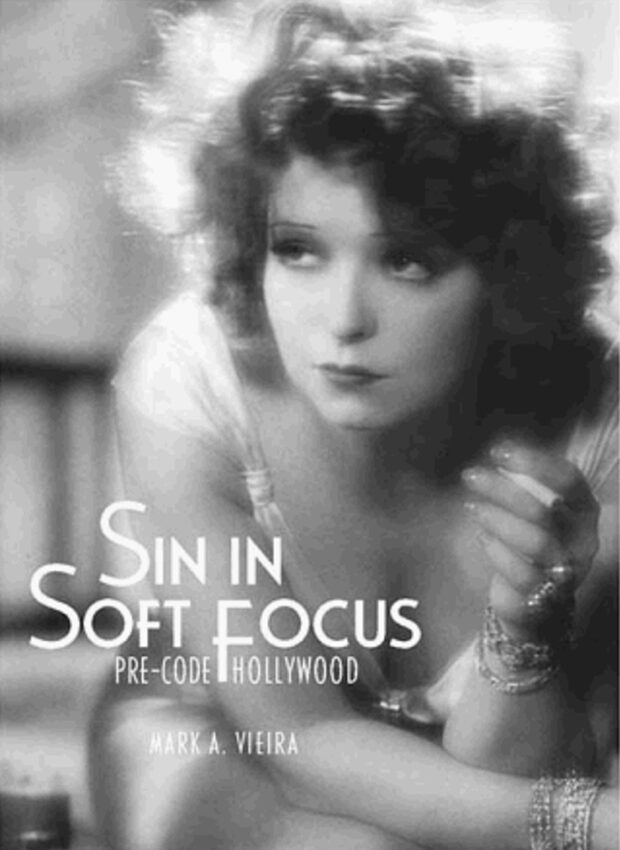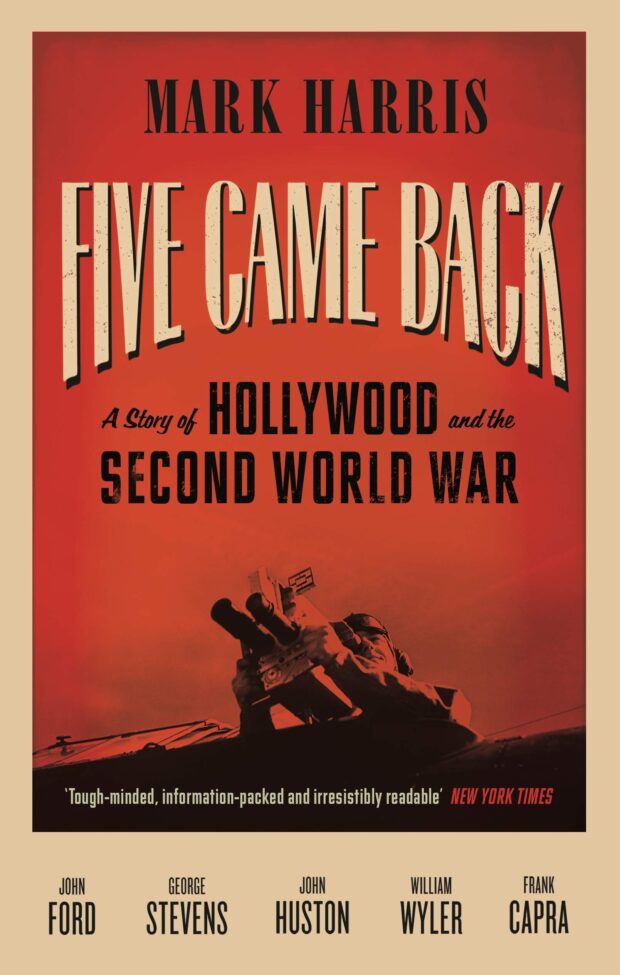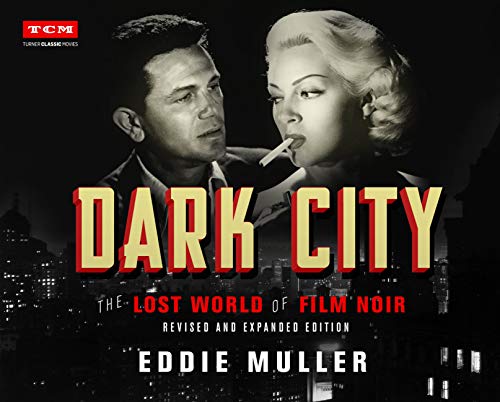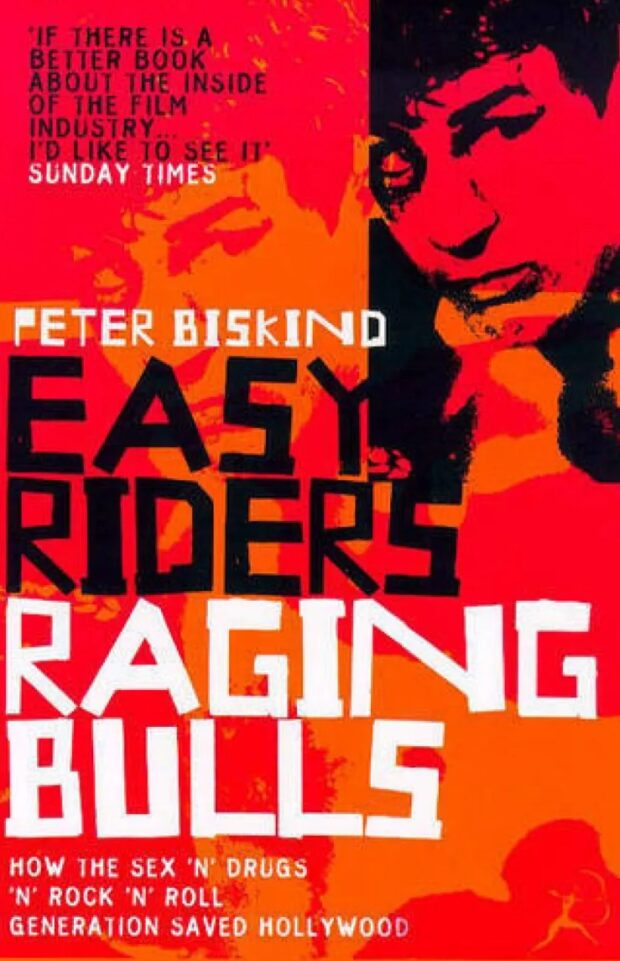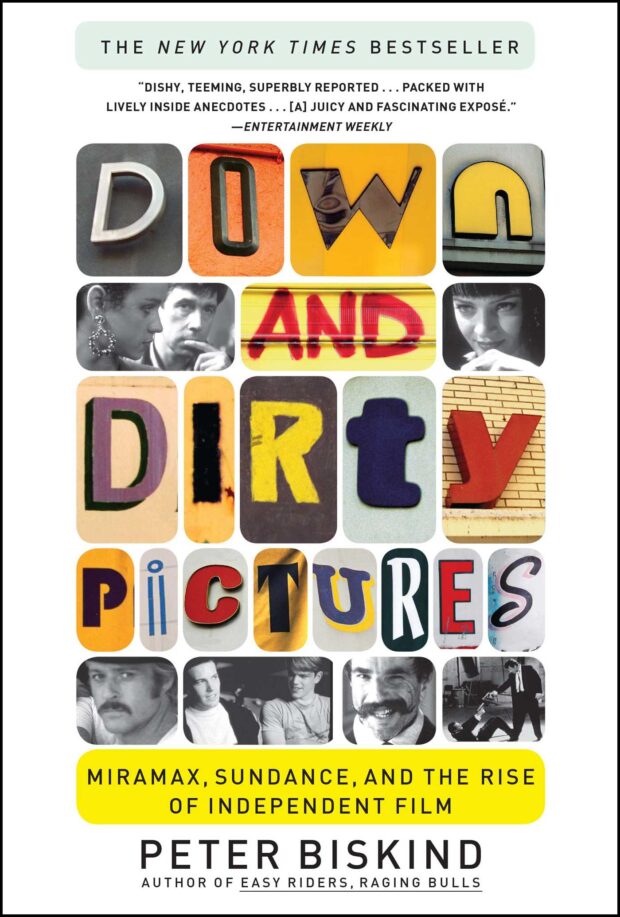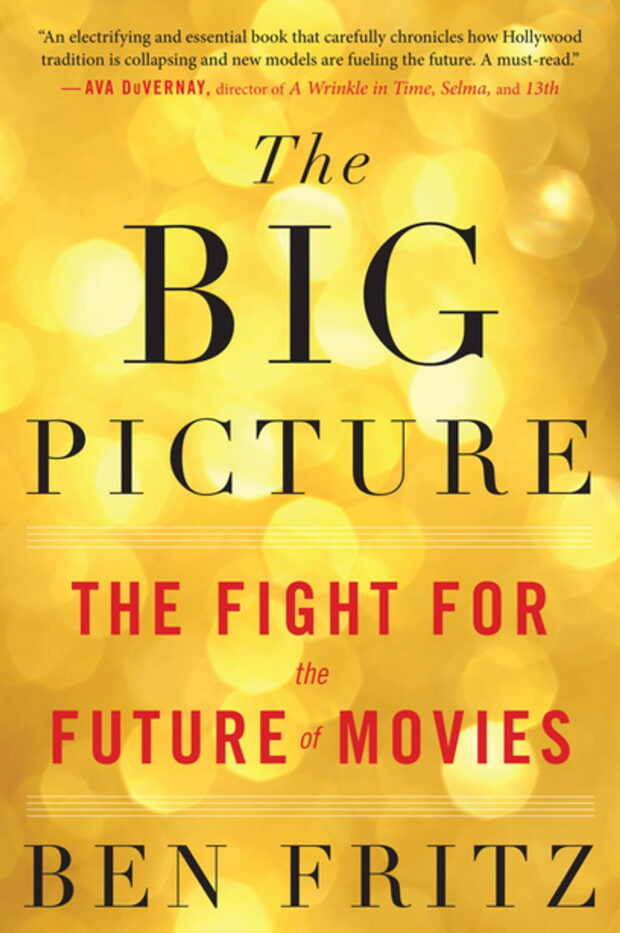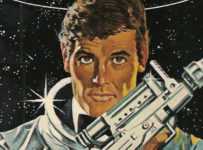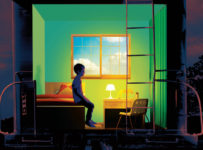“If you truly love film,” Werner Herzog once said, “I think the healthiest thing to do is not read books on the subject. I prefer the glossy film magazines with their big color photos and gossip columns, or the National Enquirer. Such vulgarity is healthy and safe.”
Far be it for me to disagree with Mr. Herzog, but he also said “I can tell those apart who can milk a cow.” So here goes nothing.
As long as there has been film, people have written about it. The first critical paper of film appeared in the The Optical Lantern and Cinematograph Journal in the early 1900s. Now every opinionated viewer with access to the Internet, myself very much included, documents and chronicles their adventures through cinema.
When I was a baby film fan, Leonard Maltin’s Movie & Video Guide was my go-to source for finding out more about this business of show. In a way, those books made me want to learn more about movies, and start recording my own thoughts in a battered exercise book.
Cut to years later and I’ve been running this site (and others) for a few decades. The exercise book has given way to Letterboxd, and the longer thoughts wind up here. So, as I read Maltin’s recent memoir, I was inspired to share some of the tomes that have helped me piece the bigger story of cinema together.
The Story of Film — Mark Cousins
Cousins came into this book with the aim of making an “accessible, single volume history of world cinema for intelligent general readers.” On this level, he succeeds brilliantly, taking us on an often breathless topographical journey through more than 100 years of cinematic innovations. Consciously eschewing the popular choices at times for lesser known gems, if you’re like me you’ll find yourself busily writing down lengthy lists of films to seek out. While this approach takes us away from the traditional history of Hollywood to a history of world cinema, it also occasionally gleans over some areas in lieu of others. Australia and Asia, for example, only get the briefest of run-throughs, especially as the book picks up pace in an artificial race to the end in the final chapters. Still, it’s hard to find a single volume that covers cinema as passionately and comprehensively as this one.
Next steps: Film Theory and Criticism: Introductory Readings — Leo Braudy and Marshall Cohen
Sin in Soft Focus: Pre-Code Hollywood — Mark A. Vieira
If you haven’t had the pleasure, pre-Code films – largely referring to Hollywood output from 1929 through to about mid-1934 – are sexy, flirty, dirty, dancing, dramatic, comedic, crime-filled fun. Vieira’s book is an essential overview of this era, covering all the gossip, the battles with censors like Hays enforcer Joseph Breen, the cut-scenes, and boundary pushing films.
Along with the heavy-hitters like Gold Diggers of 1933, Footlight Parade and 42nd Street — all of which had Busby Berkeley numbers — Vieira provides an exhaustive list of films that will keep obsessive completists like me occupied for years. Plus, it has some of the best high-quality photo pages in any of these books.
Next steps: Complicated Women: Sex and Power in Pre-Code Hollywood by Mick LaSalle
Five Came Back — Mark Harris
Harris presents a phenomenal look at the way Hollywood changed during the Second World War, and more intriguingly, the way Hollywood changed the war efforts. By concentrating primarily on five directors — John Ford, William Wyler, John Huston, Frank Capra, and George Stevens — Harris can delve into their possible motivations for signing up and go deep on their individual productions. Until reading this, I’d only really been interested in the animated propaganda films that came out of the various studios (especially Disney) over the years. Harris recognises this is where most people start their journey and doesn’t dwell on these at all. Taking us right through to how their careers changed after the war, perhaps the most haunting and poignant parts are vivid and heartbreaking descriptions of how Stevens was one of the first to capture footage of the concentration camps during the liberation of Europe. An essential text for film historians and fans everywhere.
Next steps: Netflix’s Five Came Back documentary series, and The Star-Spangled Screen: The American World War II Film by Bernard F. Dick
Dark City: The Lost World of Film Noir — Eddie Muller
This introductory book is a terrific primer for exploring those darker corners of noir that deserve to step out of the shadows. The book itself is engagingly written, with Muller using the conceit of taking the reader on a tour through the titular Dark City. This is cute, although he sometimes paints himself into a corner by having Vixenville as the place where all femme fatales hang out. Other places are known as Hate Street, Shamus Flats, and the Psych Ward. There’s almost too much information for a intro tome, but it’s a great companion to Mark A. Vieira’s work on the pre-Code era. The main problem with books like these is that you inevitably walk away with a Letterboxd watchlist that couldn’t possibly be seen in a lifetime. Yet it’s a happy problem, and I’m all primed for every Noirvember until the end of time.
Next steps: International Noir by Homer B. Pettey, R. Barton Palmer
Easy Riders, Raging Bulls — Peter Biskind
The phenomenal and essential history of the New Hollywood era. Even if you don’t agree with Biskind’s approach — critcised by Robert Altman, Robert Evans, Peter Bogdanovich and Steven Spielberg alike as a hatchet job — there’s no denying how powerful his narrative is. He weaves together a tale of a chaotic period in which the kids were running the schoolyard, a brief window in which auteurs got the keys and major studios took some big swings and occasional misses. You might get the impression it was all booze, drugs, sex and egos. You might be left thinking it was an era that showed more promise than it delivered. Yet by tying together stories from an era that delivered The Godfather, The Godfather Part II, The French Connection, Chinatown, Taxi Driver, Jaws, Star Wars, The Exorcist, and The Last Picture Show (to name but a few), Biskind gives us a launching point for exploring some great American cinema.
Next steps: Pictures at a Revolution — Mark Harris
Down and Dirty Pictures – Peter Biskind
A spiritual successor to Biskind’s early book, in that it depicts another era of mavericks storming the castle. Just as New Hollywood changed US output for a decade, the rise of indies in the late 80s and early 90s sparked a decade of new voices that still resonate today. Biskind’s 2004 book traces the history of the Sundance Film Festival and offers detailed notes on the production of seminal films, including works from Soderbergh, Russell, Anders, Rodriguez, Smith and, of course, Tarantino. If Robert Evans was the driving voice in New Hollywood, here Biskind casts Harvey and Bob Weinstein in a similar fashion. Biskind is open about a number of people unwilling to talk to him about the Weinsteins, still terrified of his wrath in a pre-#MeToo environment. Indeed, it’s interesting reading this now in light of the convictions of the last few years. Biskind certainly has enough material to cast Weinstein as a tyrannical control freak intent on batting above Miramax’s weight. It would be interesting to see what Biskind would write over a decade later with far more people willing to go on the record.
Next steps: Best. Movie. Year. Ever.: How 1999 Blew Up the Big Screen — Brian Raftery
The Big Picture — Ben Fritz (2018)
So much has been said and written online about the death of cinema, and the gobbling up of all the available airtime by franchise tentpoles. Fritz attempts to trace the history of how this came to be. How studios stopped taking risk on mid-budget films for some audiences in lieu of more ‘sure-fire’ branded content with mass appeal. While Fritz doesn’t cover any massively new ground, by piecing together official sources with the leaked Sony emails on 2014, he paints a picture of how this franchise thinking developed. Sony and Disney are clearly case studies, but he covers everything from the changing nature of the home market, to the influence of streaming giants and the broader change in viewing habits. Written pre-pandemic, so it would be interesting to see a post-2020 addendum.
Next steps: Ride of a Lifetime: Lessons Learned from 15 Years as CEO of the Walt Disney Company — Bob Iger’s flip side to this story is also excellent.
Further reading
There’s stacks of books on film history, and it all depends on how far down the rabbit hole you want to go. I love pretty much anything Taschen puts out, for example, especially things like Stuart Galbraiths Japanese Cinema. Bill Krohn’s Hitchcock at Work is one I revisit frequently, From the last few years, Nathalia Holt’s The Queens of Animation: The Untold Story of the Women Who Transformed the World of Disney and Made Cinematic History is essential for Disney fans, as is Ed Catmull’s Creativity Inc, and Don Bluth’s Somewhere Out There: My Animated Life. A personal favourite is Margaret Barton-Fumo’s edited collection Paul Verhoeven: Interviews, spanning the controversial director’s entire career.

